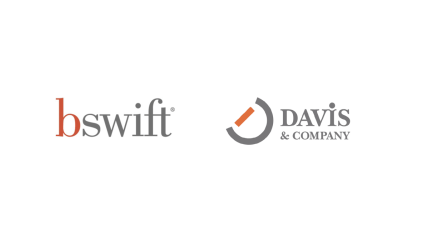
A year or so ago, when we first pivoted from in-person employee meetings to virtual events, we used whichever tech platform was readily available.
But now that virtual events—town halls, leadership meetings and conferences—are a way of life, we need to up our game. Luckily, a growing number of applications—including 6Connex, Hopin, Eventcube, Orbits, ON24 and Bizzabo—recreate the experience of attending in person.
But how do you choose which tool is right for you—and use that platform to create a memorable meeting? Here are 7 ways:
1. Decide on the best platform to meet your objectives
With new applications emerging all the time, how do you decide which tool is best? Well, it depends on your objectives. To start, figure out how much interaction you want to create.
For most meetings, simple tools like Microsoft Teams and Zoom should suffice, but still offer:
- Screen sharing
- Breakout rooms
- Polling
- Whiteboards
- Recordings with transcripts
Each of these tools include versions for larger audiences, but if you are looking to take your event further, choose a platform with more advanced features like:
- Project management support
- Audio/video production
- Multi-track agendas
- Metrics
- Post-meeting surveys
- Gamification
- Multilingual support
2. Pay for features you need—and ditch those you don’t
Let’s be clear: some platforms come with a lofty price tag. But in-person events don’t exactly come cheap either—expenses like staff, venue, setup and takedown, accommodations, meals and travel costs really add up!
Some companies offer different tiers or packages with varying prices to select from. To ensure you’re getting the most bang for your buck, consider the unique needs of your event and select a platform that can support them. In other words, don’t go with a product that offers cool features you likely won’t use.
Think about which elements you consider priorities—like solid production quality or dynamic networking sessions—and which you can live without—like a branded mobile app for the event or individual attendee analytics.
Then, consider how the platform aligns with your budget. Be thoughtful about the experience you want employees to have and choose from there.
3. Foster engagement with dynamic content and interaction
After selecting a tool, decide which features best support your objectives. While polling and chats are good starting points, employees have higher expectations when it comes to larger events.
Virtual event platforms allow you to create a dynamic, immersive experience that attendees won’t forget. Not only do they recreate a lobby and different “rooms” to visit, they build in gamification to elevate features you’re already familiar with (like breakout rooms and live presentations).
These platforms provide easy access to key event information, live and upcoming sessions, surveys and more, all in one, easy-to-access spot. Plus, many also provide secure and high-quality livestream and video-on-demand sessions with interactive tools like audience Q&A and upvoting.
So, use this to your advantage when setting up your event by incorporating different features to keep the experience fresh from start to finish.
4. Reach more people than ever before
For many, the hassle of packing up and traveling to a destination meeting isn’t ideal—even when there isn’t a pandemic.
You can make things easier for attendees and reach more people than ever before by having a virtual event rather than assembling in person. By using a virtual event platform, employees from around the world can:
- Meet each other for the first time
- Share ideas with different departments
- Connect with one another easily
- Speak and work directly with top-level leaders
Plus, the time it takes employees to travel to an in-person conference dramatically cuts down on productivity or forces them to “make up” missed time. The virtual event just takes a few hours out of their day and allows for a quick return to work.
So, when building your participant list, consider expanding it so everyone can join.
5. Be flexible when it comes to timing
There are certainly advantages to having everyone present at the same time—networking, informal chats, breakout sessions, brainstorming, etc. But, anyone who’s had to fling out emails between breakouts or take a call during the keynote presentation knows that sometimes work doesn’t stop for anything.
In an age where all your movies are on demand, why can’t it be the same for your work events? Well, virtual event platforms do offer the luxury of flexibility. Rather than carving out eight straight hours for your event, try exploring this on- demand option. If employees can watch speaker videos, contribute to forum-style conversations and visit booths on their own time, they will be more invested and able to focus.
Or try a hybrid approach by offering most of the content on-demand with just a few live sessions.
6. Reinvent networking for the virtual world
Many people attend big meetings or conferences to network. But developing meaningful connections with new contacts through a screen can be challenging. Simply put: You can’t recreate the natural interaction that comes with meeting face-to-face during happy hour or on the trade show floor.
However, you can use virtual event platforms to get creative. Here are a few ideas:
- Get creative with the format
Many platforms offer virtual rooms that attendees can frequent. Create clubhouses (virtual rooms) where participants can gather for free-flowing conversation based on themes, such as “bookworms,” “working moms” or “newbies.” This helps create a more personalized atmosphere for attendees to connect more dynamically. - Offer opportunities for one-on-one conversations
Use the built-in interactive tools to kickstart one-on-one networking opportunities. For example, host several virtual booths, each with an individual representative who can text or video chat with interested participants in real time. - Share tips with participants
Because virtual networking allows you to make an initial connection that can lead to further meetings or discussions, encourage participants to:- Send a direct message to someone, leading to a more personal conversation
- Post their email address in the chat during virtual events
- Invite others to connect on LinkedIn for a follow-up conversation
7. Measure your meeting’s impact
When it comes to measuring success, relying on anecdotal evidence doesn’t cut it. You need data to demonstrate the value of your work. Many virtual event planforms offer comprehensive, built-in analytics that help you understand what worked and what didn’t.
Following your event, use the platform to pull reports that show the:
- Number of registered participants
- Turnout for each session, room and booth
- Total downloads and views
- Engagement stats – what participants interacted with and for how long
Then, use this data to determine immediate and future communication needs. For example, the information can help you create follow-up toolkits and emails that plug information gaps.
When it comes to large events, in-person always offers the most engaging experience. But, virtual event platforms come pretty close. The next time you’re planning a large meeting, keep these 7 tips in mind to get the most out of your virtual event experience.






